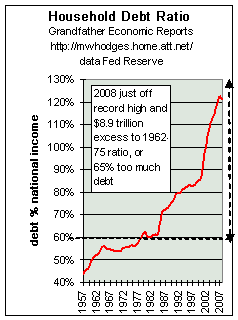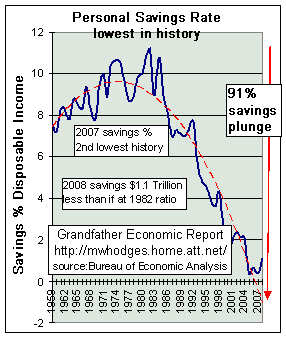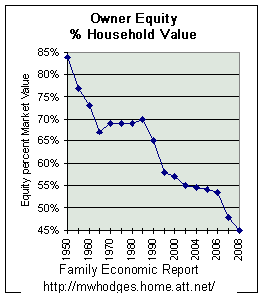More Debt Rejected As Solution For Debt Crisis
How many times since the current financial crisis began, have we been told by the Government that the key to an economic turnaround is easier credit and more lending? The Federal Reserve and Treasury have supplied virtually unlimited amounts of credit and guarantees to the banking industry to increase lending activity. The government is refusing to allow the return TARP funds, demanding instead that the money be lent out.
There’s just one problem with the government’s attempt to force more borrowing; consumers don’t want to borrow and banks have few qualified customers. In a Wall Street Journal report that must be causing fits in Washington, we learn today that the major recipients of TARP funding have dramatically reduced new lending activity.
Bank Lending Keeps Dropping-WSJ
According to a Wall Street Journal analysis of Treasury Department data, the biggest recipients of taxpayer aid made or refinanced 23% less in new loans in February, the latest available data, than in October, the month the Treasury kicked off the Troubled Asset Relief Program.
Banks defend their lending, saying they’re eager to issue new loans, refinance existing ones and modify those in danger of default. Complicating their efforts, bank executives say, is a decline in demand among consumers and businesses.
But excluding mortgage refinancings, consumer lending dropped by about one-third between October and February. Commercial lending slumped by about 40% over that period, the data indicates.
Of the 19 banks, the only ones to originate more loans in February than October were BB&T Corp., a regional bank based in Winston-Salem, N.C.; Wall Street giant Morgan Stanley; and State Street Corp., a Boston-based company that provides financial services mainly to institutions and wealthy individuals.
One of the banks showing the biggest lending decline was J.P. Morgan Chase & Co. In October, the New York bank made or refinanced $61.2 billion in loans. That figure declined 35% to $39.7 billion in February.
J.P. Morgan executives defend their lending levels. In the first quarter, the bank extended about $150 billion in new credit to consumers and businesses, “despite the fact that loan demand has dropped dramatically,” a spokesman said. In March, the spokesman said, J.P. Morgan made $65.5 billion in new loans — slightly more than it made in October.
So Why Aren’t The Banks Making Loans?
Banks are in business to lend money so why the decline in lending activity? The extension of credit under normal circumstances is vital to economic growth and prosperity. The reality of the current situation is that the banks (and every other financial institution) have for decades recklessly extended credit without regard to the to the ability of the borrower to service the debt from income.
This financial crisis is different and will not be solved by extending additional credit to over extended borrowers. The banks and their customers recognize the risk of too much debt while the Government continues to mindlessly encourage more borrowing.
US Consumers Facing Reality
As noted above, a JP Morgan spokesman stated that “loan demand has dropped dramatically”. The reasons for reduced loan demand are obvious and include the following: declining income, a low savings rate, an already intolerable debt load and a trend towards frugality. The American consumer has wisely concluded that more debt will only make his financial situation worse.
Debt Levels Soar As Incomes Stagnate
The 2nd chart’s blue data curve since 1979 (in 1993 dollars) can be compared to the above chart’s 1970-1978 – showing next to nil growth. The pink data curve from 1979-2007 expresses this in 2007 dollars. This computes real income compound growth for this 37 year period (1970-2007) of a measly 0.26% per year (about $10/month) average, compared to 12 times faster income growth of 3.7% annually in the prior 23 years 1947-1970.
Income growth for the average wage earner has been essentially flat since the early ’80’s. The early 80’s was also the beginning of the greatest credit expansion in history. Easy credit growth on a massive scale did not increase real incomes in the past nor will it do so going forward. The statistics on income will be even more abysmal when updated to 2009, reflecting salary decreases and an unemployment rate approaching 10%. The nation does not need more debt but rather more income.
Savings And Home Equity Decline
The false “prosperity” of the past based on credit fueled asset appreciation caused many consumers to believe that saving was no longer necessary. The collapse of values in stocks and real estate has now left many consumers with little net worth or liquid savings.
The American consumers have recognized that borrowed money is not income and that taking on more debt is not the path to prosperity; they are making the necessary sacrifices to improve their financial future. The US Government, obsessed with pushing more credit onto over leveraged borrowers, would do well to follow the example of its Citizens.



